LATEST NEWS


(They drive our trains and buses, teach our children, repair our roads and protect our safety. Public employees perform these and countless other jobs, although they remain mostly off the radar of the public they serve. With our new “Pro Publica” series, Frying Pan News presents the lives of these men and women front and center.)
After 10 years of marriage, Aisha Blanchard-Young’s husband is still shocked by the amount of time Aisha spends in her kindergarten classroom teaching. He jokes that if someone really wants to find out what it is like to be a teacher, they should talk to a teacher’s spouse. As a quality control technician for a stadium electronics company, he never has to take his work home. Aisha isn’t as lucky.
During the school year Aisha gets up at five in the morning to ready herself and the couple’s two boys (one 5 and one 2) for the day.
» Read more about: Aisha Blanchard-Young: A Passion for Teaching »


In the Food Network’s popular show, Restaurant Impossible, star Robert Irvine visits a failing restaurant that is poorly managed, has depressing décor, and which serves inedible food. He and his staff completely transform the business, and by show’s end there are hugs and smiles all around. Many of the restaurants Irvine visits are completely unsanitary. In a recent episode, Irvine told the owners that their place had “over 500 health code violations.” He said the kitchen was so disgusting that he would not even try the food, and told diners that they were eating at their own risk.
But neither Irvine nor the Food Network reported the establishment to the local health department. Nor did they ask how such a “disgusting” kitchen could have gone uninspected by city officials, or raise alarms as to the likelihood there were many other restaurants in the city also endangering their customers’ health.
» Read more about: Why ‘Restaurant Impossible’ Blows the Wrong Whistle »


you want dogs? I walked all four shepherds
in the park, by day and dark
and nobody dared come near; bark?
all they had to do was walk,
the four big shepherds in the park
love? you want love? I hardly miss her;
but her dogs I walked
by day and dark, yes,
I miss the dogs, the four
big shepherds in the park.
——————————————————–——————————————————–
Source: Intensifications, published by Red Hen Press (2010).
Originally from Brooklyn, N.Y., Austin Straus has been drawing and painting since childhood, but began writing seriously in his mid-thirties. His poems and illustrations have appeared in such literary magazines and anthologies as Caliban, Grand Passion, Jacaranda Review, Red Dance Floor and The Maverick Poets. Known as the host of KPFK’s The Poetry Connexion,


The National Labor Relations Board (NLRB) is now fully staffed and able to continue to function to protect workers’ rights after the U.S. Senate today confirmed five members. The votes end a months-long blockade on President Obama’s nominees by Senate Republicans who threatened to shut the board down Aug. 27.
AFL-CIO President Richard Trumka says the confirmations are:
Good news for all workers seeking to exercise the rights they are guaranteed by law. Those essential rights include the ability to bargain together for fair wages and living standards and a workplace safe from abuse, harassment and intimidation.
The five members are current NLRB Chairman Mark Pearce; Nancy Schiffer, a former AFL-CIO associate general counsel; and NLRB attorney Kent Hirozawa, currently the chief counsel to Pearce; and attorneys Philip Miscimarra and Harry Johnson, who represent management in labor-management relations.
Earlier this month, as Senate Majority Leader Harry Reid (D-Nev.) was set to change Senate rules that would have eliminated filibusters against certain executive branch nominees,
» Read more about: Finally: National Labor Relations Board at Full Strength »


Last November unions won a resounding victory when voters defeated Proposition 32, a ballot measure that would have crippled labor’s political influence in California, partly by barring public-employee unions from using payroll-deducted funds for political purposes. The initiative, which enjoyed a huge lead in early opinion polls, was heavily funded by wealthy conservatives and far-right groups.
Union leaders were overjoyed by its defeat.
“You can’t buy California,” Dean Vogel, president of the California Teachers Association (CTA), told an election-night victory party in Sacramento. “We’re not for sale.”
The celebration hasn’t been long lived. In a little-noticed move in April, a conservative legal organization that has pushed to overturn the 1964 Voting Rights Act filed a lawsuit in federal court in Santa Ana that could accomplish in the courts what Prop. 32 couldn’t at the ballot box. The players behind the suit may not be household names but the millionaires and private foundations covering their legal fees represent a familiar klatch of extreme libertarians who,
» Read more about: Prop. 32 Ghost Looms Over Lawsuit Against Teachers Union »
Imagine a Mexican father telling his child that he’s leaving for America. He probably wouldn’t spend a lot of time explaining the complicated economic and political relationship between Mexico and the U.S., nor would he spend a lot of time explaining how difficult and dangerous the journey to el norte would be.
It would be a simple explanation, in all likelihood: “I have to go north to find work to earn money for my family.”
The children’s story Pancho Rabbit and the Coyote by Duncan Tonatiuh starts with a statement much like that. Like so many Mexican workers, Pancho Rabbit’s father decides go to north because of lack of work at home – “The rains did not come and the crops would not grow.”
Papá Rabbit, along with companions including Señor Ram and Señor Rooster, leave at the beginning of the story. The story is told from the point of view of Papá Rabbit’s family,


Last week President Obama gave a speech at Knox College in Illinois in which he announced plans to return his focus to the economy. The agenda he outlined centered on policies to rebuild the middle class leading to growth from the middle out as he put it.
The basic idea sounds good. There are few who would take issue with the focus of his policies: improving the nation’s infrastructure, better school to work transitions, high quality pre-school for everyone. These ideas all score very high in opinion polls and focus groups, although there might be serious differences on what they mean concretely.
But even if we can agree on the best way to rebuild our infrastructure, better our schools, and guarantee high quality pre-school education we will still face serious economic problems well into the future for the simple reason that the economy lacks demand. Generating demand has to be issue one,
» Read more about: A Demand Economy: What’s Needed for Growth »


For many Millennials, the present higher education system exudes an overwhelming sense of permanence. In our short lives, college tuition has always been high, education funding has always been decreasing, and college has always meant a risky “investment in our futures.” We know that these yearly tuition hikes are wrong, and that the current tuition rates already saddle us with debt we probably won’t pay off until we retire, if we retire. For many of us, the consequences are much more immediate, as many low-income students cannot afford higher education anymore. Yet we continue to shell out the money, or take out the loans. Confronted with the institutional power of the higher education system, we feel powerless.
Depressing, right? But history shows us that all is not lost by exposing the mechanisms that brought about the status quo. In their Fall 2012 article in Dissent, Aaron Bady and Roosevelt Institute Fellow Mike Konczal reveal what higher education used to mean and how it was systematically destroyed.
» Read more about: Millennials: Lower Expectations for Higher Education »


Every year Walmart holds a combination shareholder meeting and pep rally to whip up enthusiasm and promote its image as a good investment and a good corporate citizen. These huge events have the quality of a religious revival meeting, including testimonials and music to keep its stockholders and employees (whom Walmart calls “associates”) enthralled. Women’s Wear Daily called last month’s event, with 14,000 shareholders and employees, “a high-octane, entertainment-filled spectacle with moments devoted to business.”
The company always invites celebrities to entertain and mingle. At last month’s gathering in Bentonville, Arkansas — the company’s headquarters — singers Kelly Clarkson, Jennifer Hudson, John Legend, and Prince Royce performed, Hugh Jackman emceed, and Tom Cruise cruised the crowd, then mounted the stage and said: “I’ve wanted to come here for quite some time, actually because the culture you have here is like no other. I truly admire your company. [It’s] a role model for how business can address some of the biggest issues facing our world.”
» Read more about: Walmart Celebrities: Which Side Are You On? »
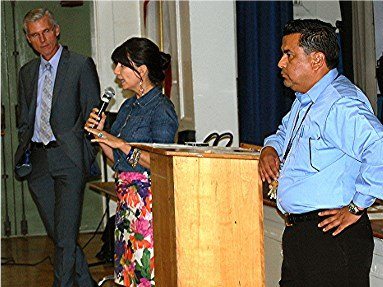

Thursday’s community meeting in the auditorium of Boyle Heights’ Lorena Street Elementary School was ostensibly a Los Angeles Unified School District briefing on why the school was about to share half of its classrooms and campus resources with a charter school.
The players were right out of Central Casting. To one side of Lorena Elementary’s podium stood LAUSD principal Enrique Soberanes — a rumpled, embattled Jaime Escalante-esque embodiment of an inner-city public school educator.
Opposite Soberanes, standing tall and lean and tanned was the impeccably tailored Dr. Jim Kennedy, looking more a William Morris Endeavor agent than the incoming principal of Walton Family Foundation-backed Extera Public School No. 2, the new K-1 charter school being imposed on Lorena Street as a co-locator.
Facing the principals were roughly 75 bewildered, mostly Spanish-speaking and working class parents, their children and a score of frustrated and angry LAUSD teachers.
» Read more about: “Co-Location” Controversy in Boyle Heights »


Big Oil says we ought to be supporting fracking because it causes less air pollution than other forms of energy, such as coal or even conventional oil drilling. As is frequently the case in these fights over facts, the oil companies have it about half right – maybe less.
Fracking technology pumps a mix of water, chemicals and sand a mile or so into the earth’s crust to release natural gas captured between layers of rock that the usual methods of drilling couldn’t touch. It’s birthed a modern day gold rush as the petroleum companies hurry to be the first to drill the Barnett Shale in Texas or the Marcellus Shale that lies beneath parts of Pennsylvania, New York, Ohio, Virginia, West Virginia, Kentucky and Maryland. Closer to home, there is the Monterey Shale formation in the old oil fields around Taft, west of Bakersfield.
Push below the surface of the big oil theme and we learn that while burning natural gas for fuel produces only about half the carbon emissions as coal,
» Read more about: Big Oil Has Big Plans for Our Environment »
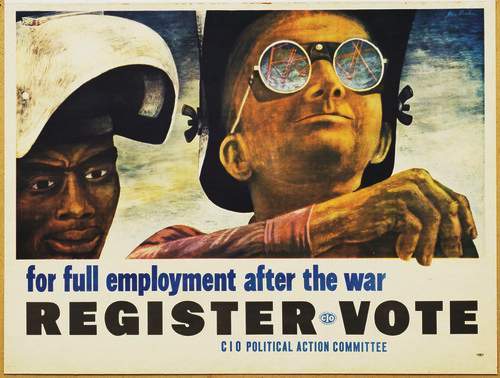
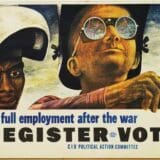
It’s not coincidental that at this very moment both the labor and racial justice movements stand at a crossroads in our nation’s consciousness. The people who fight to undo worker’s rights and assault unions are often the very same folks who craft laws and policies that allowed Trayvon Martin’s killer to walk free, that disenfranchise black voters and expand the use of racial profiling. Moreover, the public rhetoric of post-racialism is closely tied to the false promise of rampant corporate profiteering that casts the labor movement as an irrelevant “special interest.”
In 2013 the landscape of the national labor movement could charitably be described as “receding.” Last year the U.S. Bureau of Labor Statistics reported a national union membership rate of 11.3 percent — down from 11.8 percent in 2011.The ever-declining number of union members in 2012 was 14.4 million, while in 1983, the first year for which comparable union data are available,
» Read more about: At a Crossroads: Labor Faces the Future »


Meanwhile, the median wage continued to drop, adjusted for inflation.
What’s less well-known is that you and I and other taxpayers are subsidizing this sky-high executive compensation. That’s because corporations deduct it from their income taxes, causing the rest of us to pay more in taxes to make up the difference.
This tax subsidy to corporate executives from the rest of us ought to be one of the first tax expenditures to go, when and if congress turns to reforming the tax code.
We almost got there 20 years ago. When he was campaigning for the presidency, Bill Clinton promised that if elected he’d end the deductibility of executive pay in excess of $1 million.
Once in office, though, his economic advisers urged him to modify his pledge to allow corporations to deduct executive pay in excess of $1 million if the pay was linked to corporate performance – that is,
» Read more about: Why Taxpayers Are on the Hook for Corporate CEO Pay »


I grew up playing soccer and everyone I knew played it. It was the highlight of the week – AYSO owned my city, Ventura, and most cities across Southern California. So I never understood why most Americans don’t love soccer the way the rest of the world does. Until last Sunday.
Of course, I’d heard all of the usual complaints. “It’s a low-scoring, boring, non-physical game.” Is it “low-scoring”? Well, from the American perspective, it is. The average final score is about 2 to 1. But American football could be a low scoring game if touchdowns only gave a team one point instead of six. Football allows for three points just for kicking a ball between two posts.
But is it “boring”? Absolutely not! Who can forget when France’s Zinedine Zidane was sent off the 2006 World Cup final game for head-butting Italy’s Marco Materazzi‘s chest in retaliation to his verbal insults of Zidane’s sister.


I am of course glad to see President Obama focus the country on what he correctly identifies as the most pressing national problem, the crushing of the middle class. The solution he laid out in his address at Knox College, a middle-out economics which sees the middle class as the engine of the economy, is both good economics and a powerful political message. It is what progressives and Democrats need to keep emphasizing over and over again, both rhetorically and in their legislative agendas.
When it came to the broad foundations of policy, the president’s outline of the pillars of a strong middle class was on point: good jobs, quality education and job training, affordable health care, good housing, retirement security and strong neighborhoods.
Still, I found the speech disappointing. The president only nibbled at the biggest change in our economy, the relentless decline in good jobs.
» Read more about: Pillar Talk: America’s Recovery Foundations Are Cracked »
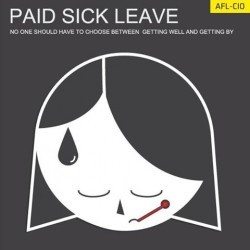
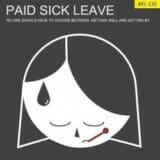
More than four in 10 private-sector workers and 80 percent of low-wage workers do not have paid sick days. This means people, especially women who are more likely to work in low-wage jobs, constantly have to choose between their health and a paycheck.
A post in Jezebel, brought to you by the AFL-CIO, explains why the lack of paid sick days causes a ripple effect on our health and communities:
“In fact, more than 80 percent of low-wage workers don’t receive a single paid sick day all year. This contributes to the creation of a sickness loop: Contagious kids go to school because mom can’t stay home with them; expensive emergency room trips are made that could’ve been prevented; employees show up to work and spread viruses to their customers and co-workers.
When young women can’t stay home to get their sleep and soup on,
» Read more about: Sickening: 80% of Low-Wage Workers Lack Paid Sick Days »


Valley after valley,
as if some primeval fiend
dragged its talons here
as it fell from the coastal shelf.
Eighty years ago, after the gold
and copper towns ghosted,
before Gunsmoke came to Vasquez Rocks,
William Mulholland’s dam gave out
and flushed the canyons clean
54 miles to Ventura, and the ocean.
We’ve seeped in, bloomed
like thrush in hollows
flecked with rust-capped roofs,
and bone-white stucco.
Now, across the 14’s eight lanes,
vast scabs of sooty earth
and blacker scrub proclaim:
the land finds ways to slough infection.
——————————————————–——————————————————–
David Eadington is a fifth-generation Southern Californian who lives in West L.A. His work has appeared in several places, including Xelas Magazine and Check Other. He was named one of Los Angeles’


News that George Zimmerman (a “white Latino”) got away with shooting and killing Trayvon Martin, a black teenager armed with nothing more than a bag of Skittles, brought joy to many conservatives. Some went so far as to say “God Bless George Zimmerman.”
Less than 24 hours before the Zimmerman verdict, Grammy-winning singer Marc Anthony, a dark-skinned Latino, was viciously lambasted — for having had the audacity to sing ‘God Bless America’ at Major League Baseball’s All Star Game. One tweeted “Why is some Spanish fuck singing ‘God Bless America’ at the all-star game?” Another wrote, “C’mon MLB. How you gonna pick a Mexican to sing ‘God Bless America’? Was Castro unavailable?”
Anthony happens to be a born-and-bred American citizen of Puerto Rican descent.
This was as ironic as it was painful, seeing as how Irving Berlin, one of America’s greatest songwriters —


In 1909, as one of the scores of short pictures he turned out that year, D.W. Griffith directed A Corner in Wheat, a 14-minute film adaptation of a story by the populist antitrust novelist Frank Norris. In it, a Wall Street speculator buys up so much of America’s wheat and keeps it off the market that prices soar and millions — including the farm family Griffith shows laboring in the fields — go hungry.
Americans’ long-standing apprehensions about banks getting control of the stuff of life are, as we’ve learned again in recent weeks, generally justified. The latest episode of Wall Street’s manipulation of commodity prices was revealed Sunday in a remarkable New York Times article by David Kocieniewski that showed how Goldman Sachs, just by warehousing 1.5 million tons of aluminum, has managed to raise the price of every beer and cola can the world over.


If 2012 was the year of the woman, 2013 is the year of the working mom. And that’s why I’m headed to California. Last week, House Minority Leader Nancy Pelosi along with Congresswomen Rosa DeLauro, Doris Matsui and others announced a new economic agenda for women and families, built on three key pillars for driving women’s economic advancement: 1) equal pay for equal work, 2) work-family balance, including paid sick leave and a livable minimum wage, and 3) access to quality, affordable child care.
As many have noted, these priorities are not new ideas. Women have been advocating for decades for these policies, because they work, they are fair and they are critical to the success of our nation. What is new is the momentum behind putting these practical solutions to work so that we can kick-start an economy that continues to languish and restore the American promise for our children — that their futures should be brighter,